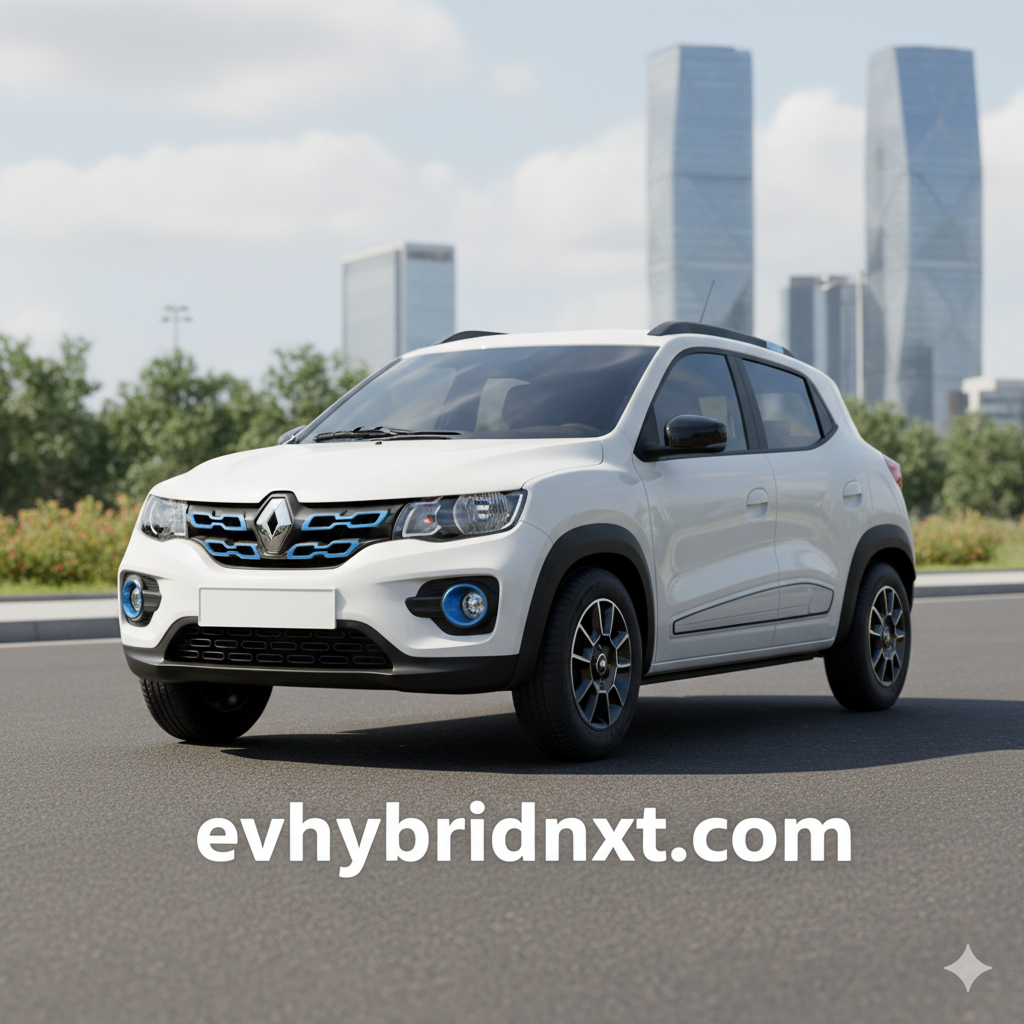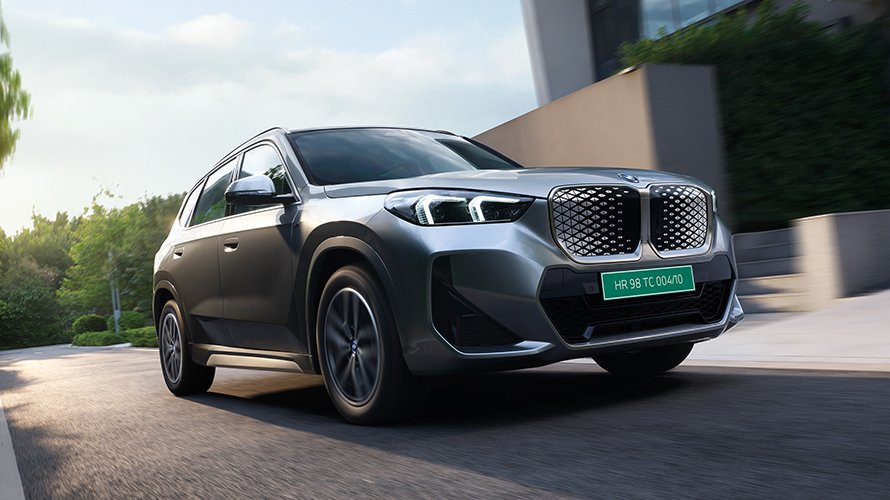In the ever-evolving landscape of electric mobility in India, where affordability meets sustainability, Renault is gearing up to electrify its popular entry-level hatchback. The Renault Kwid EV has been caught on camera during testing once more, and this time, sharper images are peeling back the camouflage to reveal intriguing details about this upcoming electric contender.
Exterior Design: EV Cues with a Familiar Twist
The spied test mule showcases a refreshed front fascia designed to scream “electric vehicle” from afar. A notable perforation on the front bumper serves as a clear indicator of its EV credentials, likely housing the charging port in a front-mounted configuration.
Complementing this is a sleek Y-shaped daytime running lights (DRL) setup, adding a modern flair to the compact hatchback’s face. These elements align with Renault’s global EV design language, seen in models like the Kiger E-Tech.
Black wheel arch claddings, outside rear-view mirrors (ORVMs), and simple black wheel hubcaps point toward a mid-spec variant, striking a balance between cost and feature. While these touches enhance its rugged, urban appeal, some aspects feel a tad retro. The flush door handles and the traditional roof antenna, for instance, seem somewhat outdated against 2025’s sleeker standards, reminiscent of the current ICE-powered Kwid’s utilitarian vibe. At the rear, expect practical additions like a spoiler, rear wiper, defogger, and reverse parking sensors, as hinted in recent spottings.
Overall, the Kwid EV maintains the supermini’s compact footprint—around 3.7 meters in length—making it ideal for India’s congested city streets and tight parking spots.
Powertrain and Performance: Modest but Efficient
Under the skin, the Kwid EV is poised to be a rebadged iteration of the Dacia Spring EV, Renault’s budget-friendly electric offering in Europe. This shared platform promises a no-frills approach to electrification, prioritizing accessibility over outright performance.
The heart of the vehicle is a 26.8 kWh battery pack, delivering a claimed ARAI-certified range of 225 km on a single charge—sufficient for daily commutes in urban settings. Propulsion comes from a 33 kW (44 hp) front-wheel-drive electric motor, which should provide peppy low-end torque for city driving. However, don’t expect neck-snapping acceleration: it’s tuned for a leisurely 0-100 kmph sprint in 19.2 seconds, with a top speed capped at 125 kmph.
Charging is straightforward and practical. Like its Dacia sibling, it supports 30 kW DC fast charging, allowing a quick top-up from 20% to 80% in just 45 minutes—ideal for those impromptu longer trips. Homeowners can rely on standard AC charging for overnight replenishment, keeping running costs low.
Interior and Features: Simple Tech for Everyday Use
Step inside, and the Kwid EV promises a clean, minimalist cabin tailored for value-conscious buyers. A seven-inch instrument cluster behind the steering wheel should display essential EV metrics like range, power flow, and efficiency, while a larger 10-inch touchscreen infotainment system takes center stage for navigation, media, and connectivity.
Expect Renault’s MediaNav system with Android Auto and Apple CarPlay support, alongside basics like power windows, central locking, and possibly a rear parking camera in higher trims. Safety features may include dual airbags, ABS with EBD, and hill-hold assist, aligning with India’s mandatory norms. The mid-spec mule suggests manual key entry and fabric seats, keeping things grounded and affordable.
Launch Timeline and Pricing: A Game-Changer Under ₹7 Lakh?With these test sightings ramping up, whispers suggest a late-2025 or early-2026 debut in India, positioning it as a direct rival to the Tata Tiago EV and MG Comet EV.
Pricing is the real hook: Renault aims to undercut competitors, potentially starting below ₹7 lakh (ex-showroom), making it one of the most accessible EVs on the market.This could democratize electric driving for first-time buyers, especially in tier-2 and tier-3 cities.
Why the Kwid EV Matters
The Kwid EV isn’t about revolutionizing performance; it’s about evolution—taking a beloved budget icon and infusing it with green credentials. As India pushes toward 30% EV adoption by 2030, vehicles like this could be pivotal in swaying the masses from petrol pumps to charging stations. With its Dacia roots ensuring proven reliability, the Kwid EV looks set to spark a new chapter for Renault in the sub-₹10 lakh segment.
Stay tuned for more updates as testing intensifies. Could this be the EV that finally puts a smile on the face of India’s mass-market motorists? Only time—and a few more spy shots—will tell.



